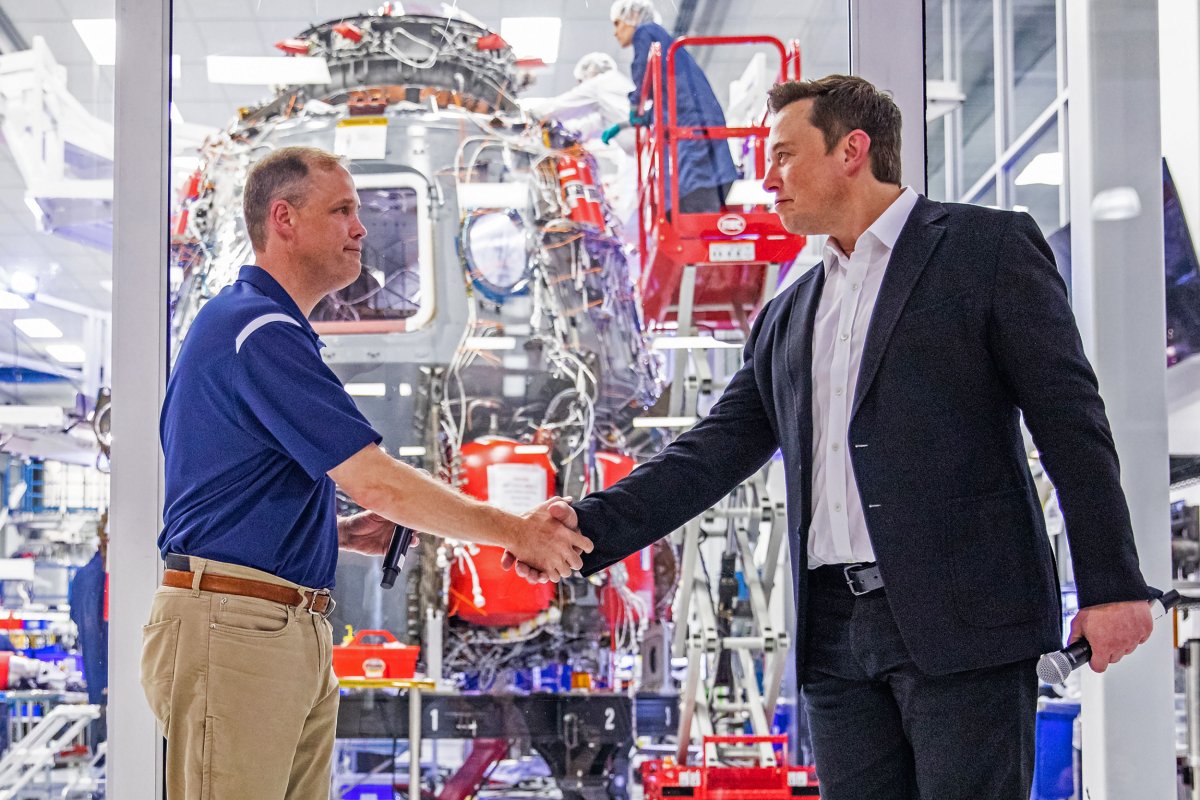SpaceX's constellation of Starlink internet satellites may be expanding beyond the 60 the company launched aboard a Falcon 9 rocket from Cape Canaveral, Florida in May.
Earlier this week, the Federal Communications Commission (FCC) filed paperwork with the International Telecommunication Union (ITU) on behalf of SpaceX, requesting permission for the production and deployment of 30,000 Starlink satellites, Space News reported.
If granted, the project will be able to add to the 12,000 broadband satellites already approved by the FCC, as well as the 24 Starlink launches planned for 2020.
Experts say the cost of this undertaking could reach $60 billion without the potential deployment of the 12,000 satellites, Business Insider wrote Friday.
"As demand escalates for fast, reliable Internet around the world, especially for those where connectivity is non-existent, too expensive or unreliable, SpaceX is taking steps to responsibly scale Starlink's total network capacity and data density to meet the growth in users' anticipated needs," a SpaceX spokesperson said in a statement, according to Space News.
Space.com reported that SpaceX founder and CEO Elon Musk said the Starlink satellites—which were initially made to provide high-speed internet service to people all over the world—won't be able to provide "minor" coverage until about 400 fully-operational space vessels have been launched.
However, there is "no guarantee SpaceX will end up launching the already-approved 12,000 satellites," the outlet also noted.
First announced in 2015, the Starlink mission was created partly as a financial stepping stone for other SpaceX ambitions, such as sending humans to Mars. Its success would be used to bolster projects like the Starship spacecraft and Super Heavy rocket—a developing system that would carry humans between the earth, moon, and mars.
Starship will be the most powerful rocket in history, capable of carrying humans to the Moon, Mars, and beyond pic.twitter.com/LloN8AQdei
— SpaceX (@SpaceX) September 29, 2019
Following an appearance on a panel Wednesday, SpaceX President and Chief Operating Officer Gwynne Shotwell discussed the sustainability of the Starship rockets.
They will "move people and cargo to distant locations or to not so distant locations but in rapid order," she told Space News. "It is important that these systems be reusable."
As previously reported by Newsweek, the SpaceX raised the bar for reusable space travel in August with the completion of the Dragon capsule's third mission.

The capsule, carried by a Falcon 9 rocket, returned more than 2,700 pounds of scientific experiments and other cargo, NASA said in a statement.
"A better understanding of silica morphology and the relationship between silica structure and its properties," it continued, "could provide improvements for increased fuel efficiency, which would reduce transportation costs and help to protect Earth's environment."
Uncommon Knowledge
Newsweek is committed to challenging conventional wisdom and finding connections in the search for common ground.
Newsweek is committed to challenging conventional wisdom and finding connections in the search for common ground.
About the writer
To read how Newsweek uses AI as a newsroom tool, Click here.








